The Road to Rococo Painting
In an art world filled with seriousness, paintings in the rococo style are just plain fun. Even formal portrait subjects seem close to cracking a smile. The rococo style originated in the stable and powerful Kingdom of France in the 18th century. These conditions gave aristocrats little to worry about, so they could engage in plenty of hedonistic behavior, which was immortalized on rococo canvases. People eventually grew weary of these idle rich fantasies around the same time the French Revolution upset the rococo apple cart at the end of the 1700s. But every so often, up to the present day, rococo is cited as an influence among a broad range of artists.
An array of architecture, painting, sculpture, interior design, and music was designated “rococo,” but there is no definitive answer as to the origin of the actual word. One theory is that it refers to either shells or rocks used as decorative elements.
The rococo painting style can be traced back to the city of Venice, Italy in the European renaissance, a time of societal rebirth after the medieval period, beginning in the early 1400s. Here, in the late 1400s, the Venetian School came into being, which was a collection of like-minded artists who, right in line with renaissance practice, blended classical sensibilities with contemporary ideas.
Venice was a booming port city at the time, so there was a plethora of riches flowing in. It was in this spirit that the Venetian School created paintings that heavily influenced the rococo art style, especially the use of color, scenes of opulent pleasure, and a sense of eroticism. The painting “Pastoral Concert” (c. 1509), alternately attributed to Venetian school luminaries Giorgione or Titian, is a perfect example. It depicts an outdoor party in a bucolic, romanticized landscape with two nude women lounging while two high-class men perform music.
Later, famed Flemish Baroque painter Peter Paul Rubens, who made his mark in the 17th century, became a major rococo influence, especially with his voluptuous depictions of flesh.
What is Rococo Painting?
The Kingdom of France was the art capital of Europe at the time, as well as rococo painting’s spiritual center. As the 18th century progressed, the rococo style acquired some powerful fans and patrons, most significantly France’s King Louis XV and his “official first mistress” Madame de Pompadour. The latter got the nickname “The Godmother of Rococo” for her tireless promotion of the style.
The beginning of Rococo as a painting movement has been narrowed down to one man and one work—Frenchman Jean-Antoine Watteau, and his painting “The Embarkation for Cythera” (1717). The work, imbued with both the Venetian School and Rubens, was a “reception piece” on the occasion of Watteau’s acceptance into Paris’ Académie Royale de Peinture et de Sculpture, France’s most prestigious art institution at the time. This piece was so unprecedented that the academy was compelled to create a new classification in their list of artwork types— “fête galantes” (“outdoor entertainments” or “courtship party”). This designation became the dominant one for subsequent rococo art.
“The Embarkation for Cythera” depicts aristocratic romantic couples moving through different phases of a “love journey” in a pastoral landscape. Amorous pursuits are apropos, as the titular Greek island is considered the mythical birthplace of Aphrodite, the goddess of love. However, adding the mythological element was not a purely artistic decision. So-called “Historical Paintings” held the number-one ranking in the academy’s categorization of artwork, and mythology fell under that umbrella.
Rococo Painting at a Glance
When you first fix your gaze on a rococo painting, it may look like any other work in the classical tradition, but a closer look reveals some unique characteristics:
- The subjects are relaxing or having fun: There’s no super-seriousness here, just people frolicking without a care in the world. Even portraits by artists working in the rococo style are mellower than other styles of portraiture that have a formal rigidity.
- Lines and colors are soft: you won’t see loud colors or sharp lines in rococo paintings.
- The natural world makes an appearance: Inevitably, the jolly subjects are immersed in a bucolic landscape.
- It is idealized: the painting is presenting a not-quite-real, dreamlike romanticized image. Plus, ideals of love and lust are evident.
- Mythology plays a role: Many rococo paintings feature the gods of antiquity, and sometimes the mythical landscapes in which they dwell.
Rococo Painters and Their Works
François Boucher: Is the most celebrated rococo artist who was active in the style’s prime years from 1730 to the 1760s. Boucher is notable for uniting the elegance of the aristocracy and nudes and was greatly influenced by Rubens and Watteau. Boucher was highly successful, and benefited from royal patronage. Louis XV named him First Painter to the King in 1765, and he painted Madame de Pompadour’s portrait on numerous occasions.
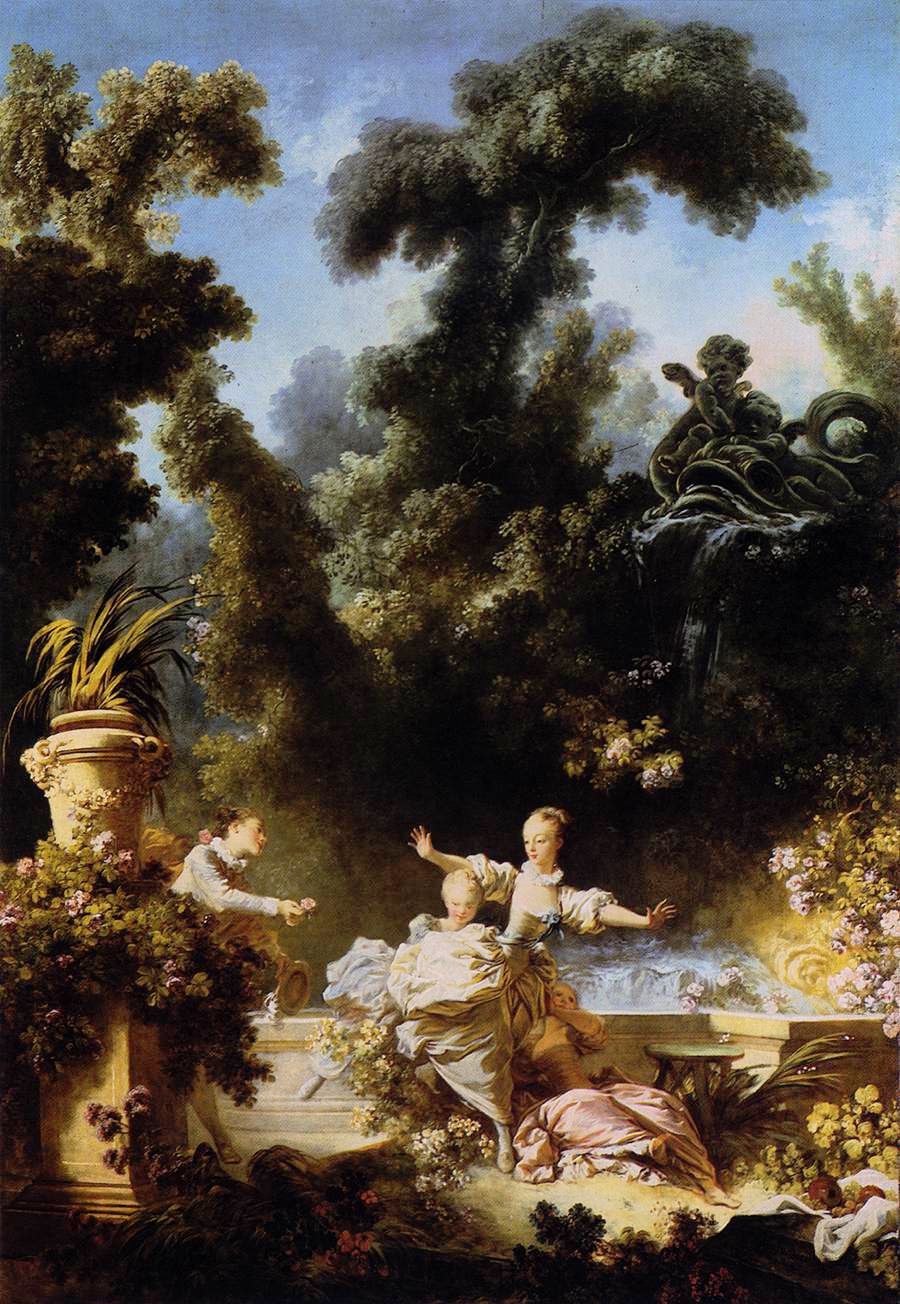
“The Triumph of Venus” by François Boucher, credit Wikimedia Commons
Nude women graced many of Boucher’s best paintings in the rococo art style. He was highly adept at painting flesh, so his unclad subjects pulsed with sensuousness and warmth. Boucher’s “The Triumph of Venus” (1740) oil on canvas, is quintessential rococo in a playfully erotic mythological seascape. Venus, the goddess of love, rides a wave atop a shell. She is surrounded by a completely nude cast of varied characters—gods, naiads, nymphs, and winged cupids.
Maurice Quentin de La Tour: Is considered the best pastel portraitist in history, and this immense skill is plainly seen in his rococo style works, which could be mistaken for paintings at first glance. La Tour was able to take advantage of pastel’s ability to give warmth to human flesh, and realistically depict textures of fancy fabrics. The artist had a knack for capturing a sitter’s brief expression or gesture by carefully studying his subject and creating preparatory sketches while in conversation.
La Tour’s pastel skills first made a splash in 1735, when he created a portrait of iconic French philosopher Voltaire. Soon, he received commissions from both the elite and the bourgeoisie.
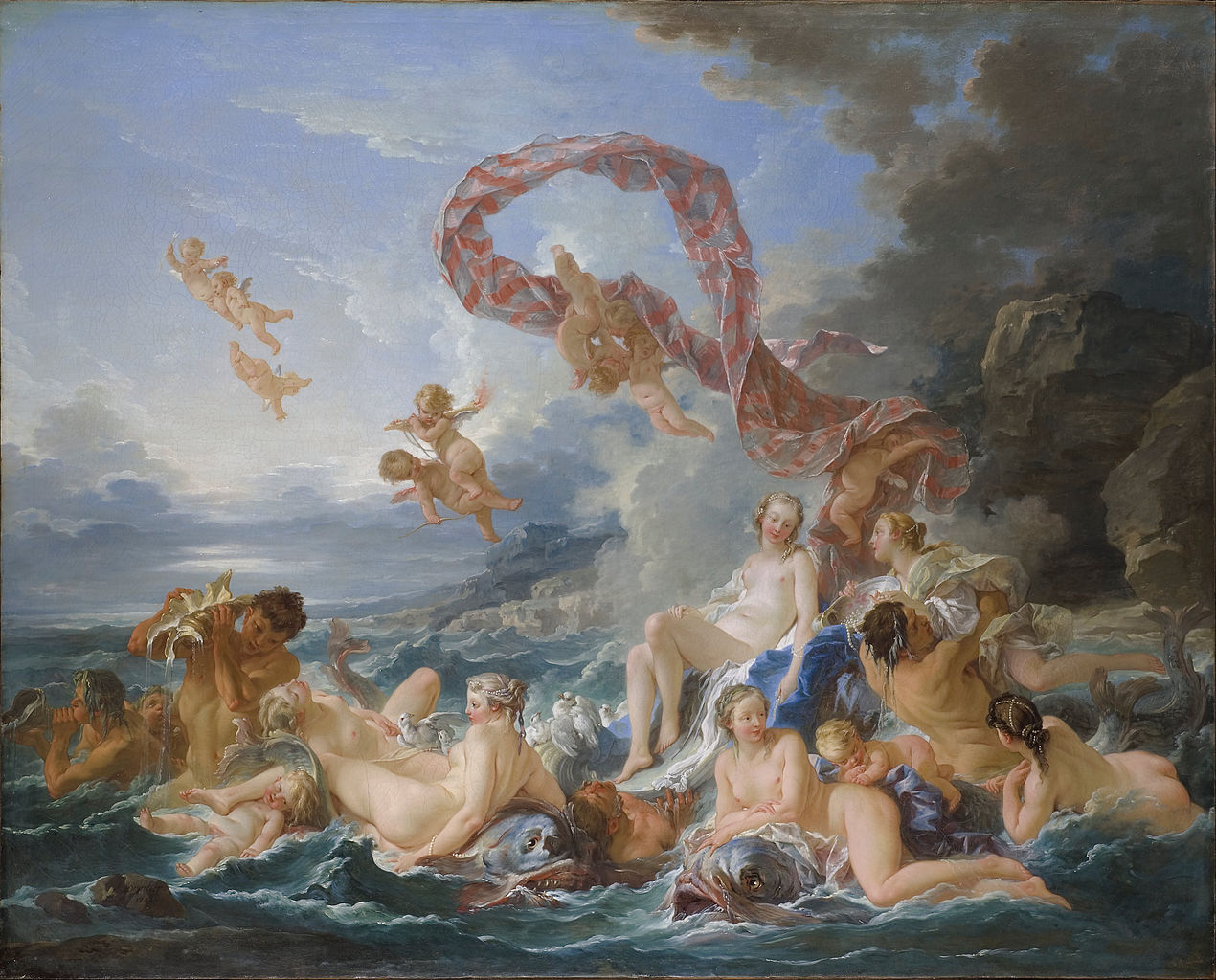
“Portrait of the Marquise de Pompadour” by Maurice-Quentin de La Tour, credit Wikimedia Commons
La Tour’s 1756 work “Portrait of the Marquise de Pompadour” (an alternate name for Madame de Pompadour) is a rococo style tour de force that shows off the artist’s formidable skill, and excursion into mixed media. First off, it’s huge for a pastel, about seven feet in height and just over five feet wide. The idealized seated figure of the Madame is surrounded by musical, visual art, and intellectual literature, all presented on at least eight sheets of blue paper glued onto canvas on a stretcher, and features gouache highlights.
Jean-Honoré Fragonard: An incredibly prolific rococo painter managed to produce over 500 works in his lifetime. This may be because he was really fast in his process. Fragonard represented the next generation of rococo and had Boucher as one of his mentors. Historians assert that Fragonard could have achieved “History Painting” greatness as a part of the Académie Royale de Peinture et de Sculpture, but the artist rejected this path in favor of creating small-scale “cabinet paintings” for moneyed patrons.
By the 1760s, Fragonard gained acclaim for a sumptuous, billowy rococo art style in a larger scale than the cabinet paintings, which is exemplified in two oil-on-canvas commissions. “The Swing” (1767), commissioned by a French baron, has the aristocrat’s mistress looking positively gleeful as she cavorts on a swing. The risqué scenario has her husband pushing her at the right, and her male lover looking up her billowing dress at the left.
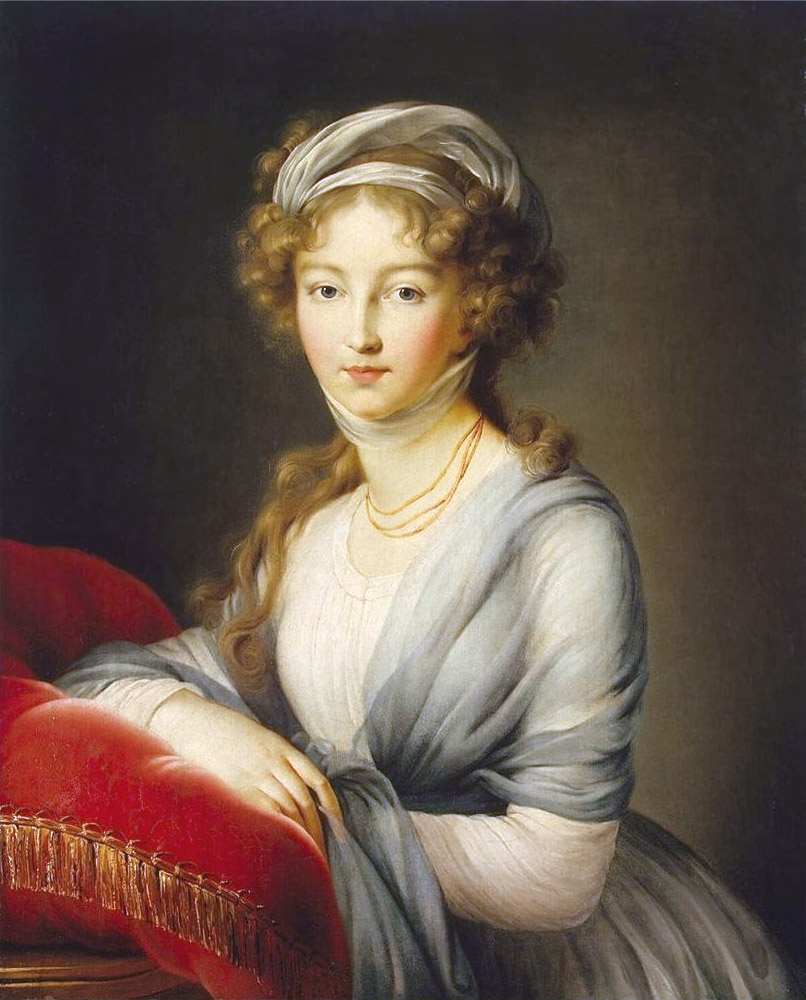
“The Progress of Love: The Pursuit” by Jean-Honoré Fragonard, credit Wikimedia Commons
Then there’s the colossal commission given by Madame du Barry, the last mistress of Louis XV, in the early 1770s. The result was the “Progress of Love” series, four rococo oil painting masterpieces each showing one phase of a romance—“The Pursuit,” “The Meeting,” “The Lover Crowned,” and “The Love Letter.” Du Barry actually rejected the finished product, then later got guillotined, but that’s another story…
Élisabeth Vigée Le Brun: In an art world full of white, European males, she made a name for herself and became one of the most lauded artists of the rococo period and beyond. She didn’t specifically place herself in the rococo style, but the influence is clear. Le Brun was a child prodigy of sorts, becoming a professional portrait painter while still a teenager. While just in her early twenties, her client list included Marie Antoinette herself. Le Brun ended up painting more than 30 portraits of the queen. Le Brun was so beloved by the royals that King Louis XVI ordered that she be immediately accepted by the Académie Royale de Peinture et de Sculpture, bypassing the usual admission protocol. With this backing, Le Brun was able to immediately claim the school’s highest rank, the aforementioned “History Painting” designation.
Le Brun’s feeling of empowerment is plainly seen in her famed 1782 self-portrait. She presents herself as both beautiful in visage and clothing, but also clutches palette and brushes in one hand and is making a conversational gesture with the other as if engaged in intellectual discourse.
Le Brun fled at the start of the French Revolution, and ended up traveling across Europe, painting a number of aristocrat portraits along the way, which had the vivid fleshiness of the rococo style. By now she was well-practiced in the relaxation of subjects with good conversation. In the late 1790s, Le Brun found herself in Russia, and felt somewhat at home due to her acceptance by the elites.
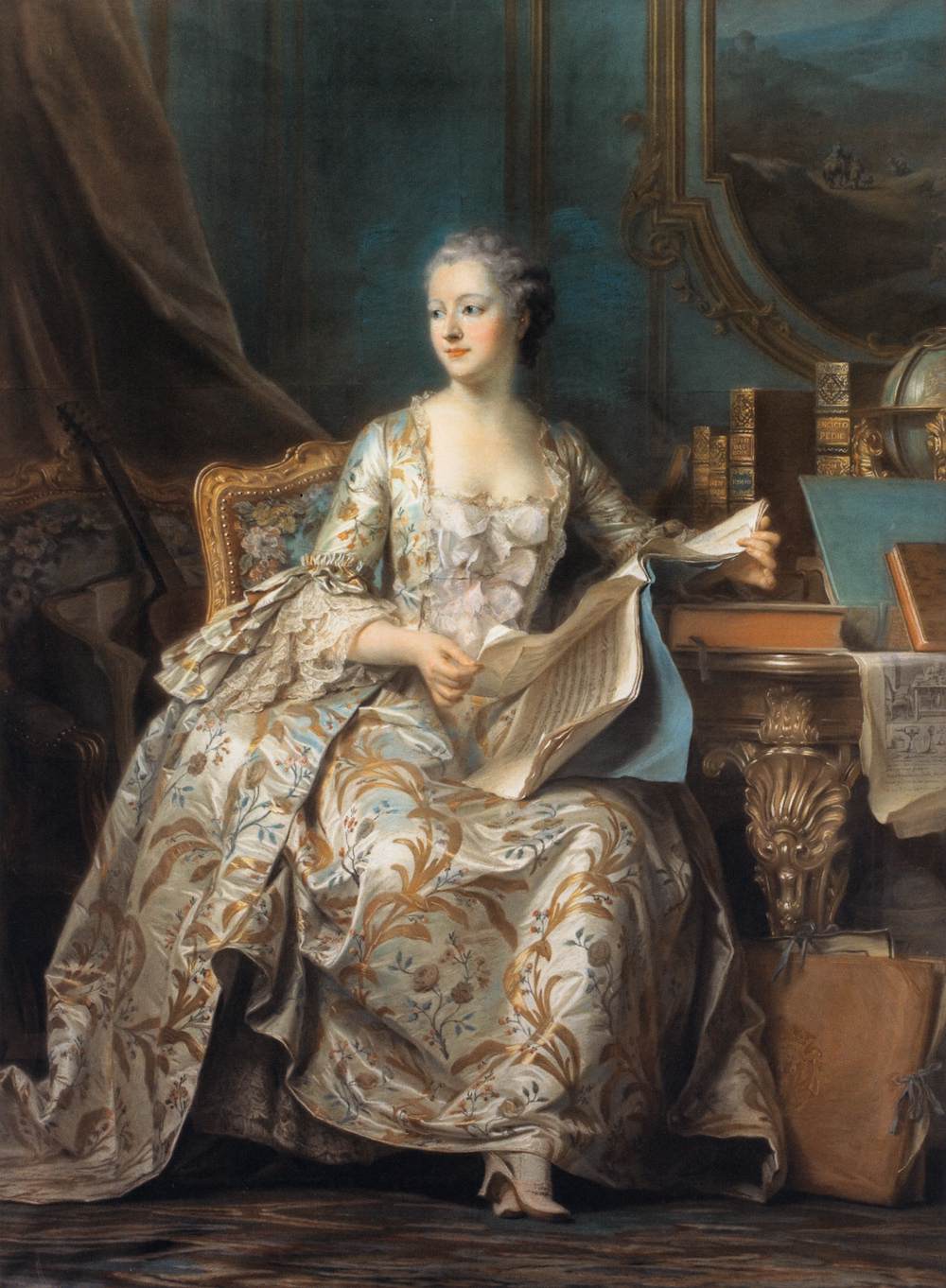
“Portrait of Empress Elizabeth Alexeievna of Russia” by Élisabeth Vigée Le Brun, credit Wikimedia Commons
A great example of one of these “exile works” is an oil on canvas portrait of Elizabeth Alexeievna, the Empress of Russia during the reign of Emperor Alexander I.
A Rococo Design Addendum
So far, we’ve only discussed the rococo art style on canvas, but a mention of rococo in its interior design and furniture guises is definitely warranted. And one of the best places in the world to find it is in the Versailles Palace outside Paris. This was the domain of several iconic French kings. Once a hunting lodge for Louis XIII in the early 1600s, when Louis XIV moved the court and government there in 1682, it was greatly expanded and lavishly decorated, a trend that continued until the French Revolution. Today’s Versailles Palace is a giant, incredibly popular museum, containing 2,300 rooms, bedecked in a mix of the time’s artistic styles.
The King’s Private Chamber (aka “Corner Room”), the place where the king conducted daily business, is bursting with rococo design. Within this inner sanctum is a stunning rococo furniture piece dubbed “Bureau du Roi” (“The King’s Desk”).
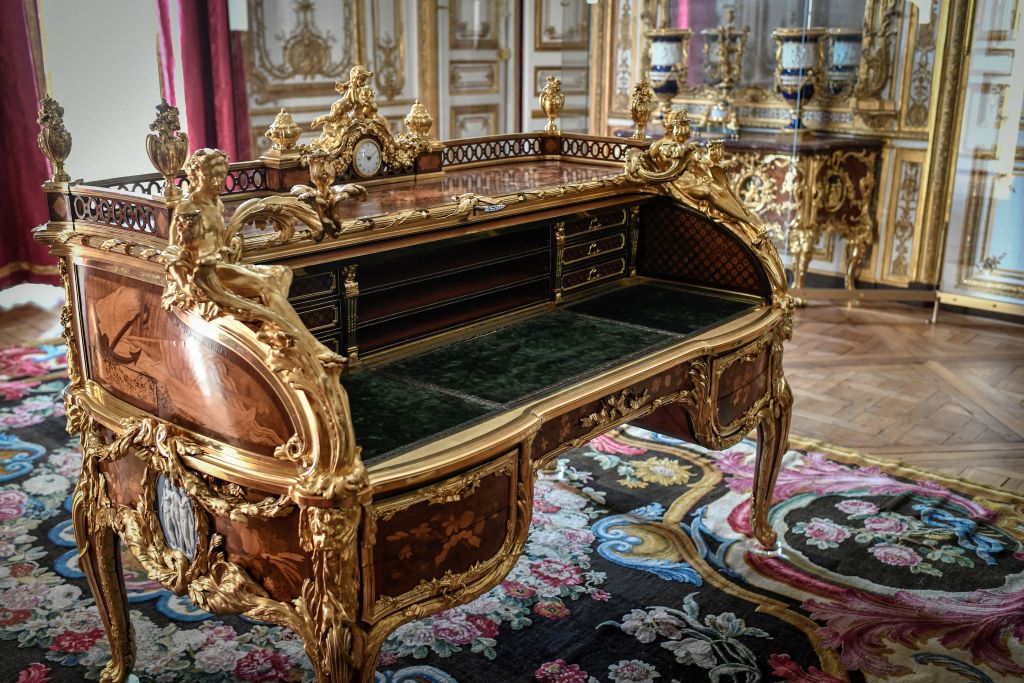
A picture taken on April 6, 2021 shows the King’s desk in the “Cabinet d’angle du roi” (the King’s private chamber) after its renovation at the Chateau de Versailles (Palace of Versailles) in Versailles, in the outskirts of Paris. Photo by STEPHANE DE SAKUTIN/AFP via Getty Images
Around 1760, the roll-top cylinder desk was first conceived as an intricate miniature wax model created by designer Jean-François Oeben, master cabinetmaker for the royal arsenal. The full-size desk was completed by his successor, Jean Henri Riesener, in 1769. Immediately noticeable is the elaborate, swirling decoration featuring plaques, statues, busts, vases, and candle stands
composed of bronze gilded with gold—unmistakably rococo. Then the complex marquetry, composed of fine woods, reveals itself. In an oval reserve on the “public” side away from the king is the marquetry head of Silence making a “shushing” gesture, indicating the need to keep quiet about the king’s business.
The desk has a clock at both sides, plus a nifty mechanical feature, which allowed the king to safely keep papers on the desk. With a single key only he possessed, the king could unlock the cylinder lid and all the drawers at once.
Nowadays, you don’t have to go to a prestigious school or have rich patrons to dive into rococo painting. Grab your art accoutrements, find the image of a rococo work for inspiration, and give it a try!
Are you feeling inspired after reading about the rococo movement? Make sure to shop our site for your next creation.















